01 | Concept
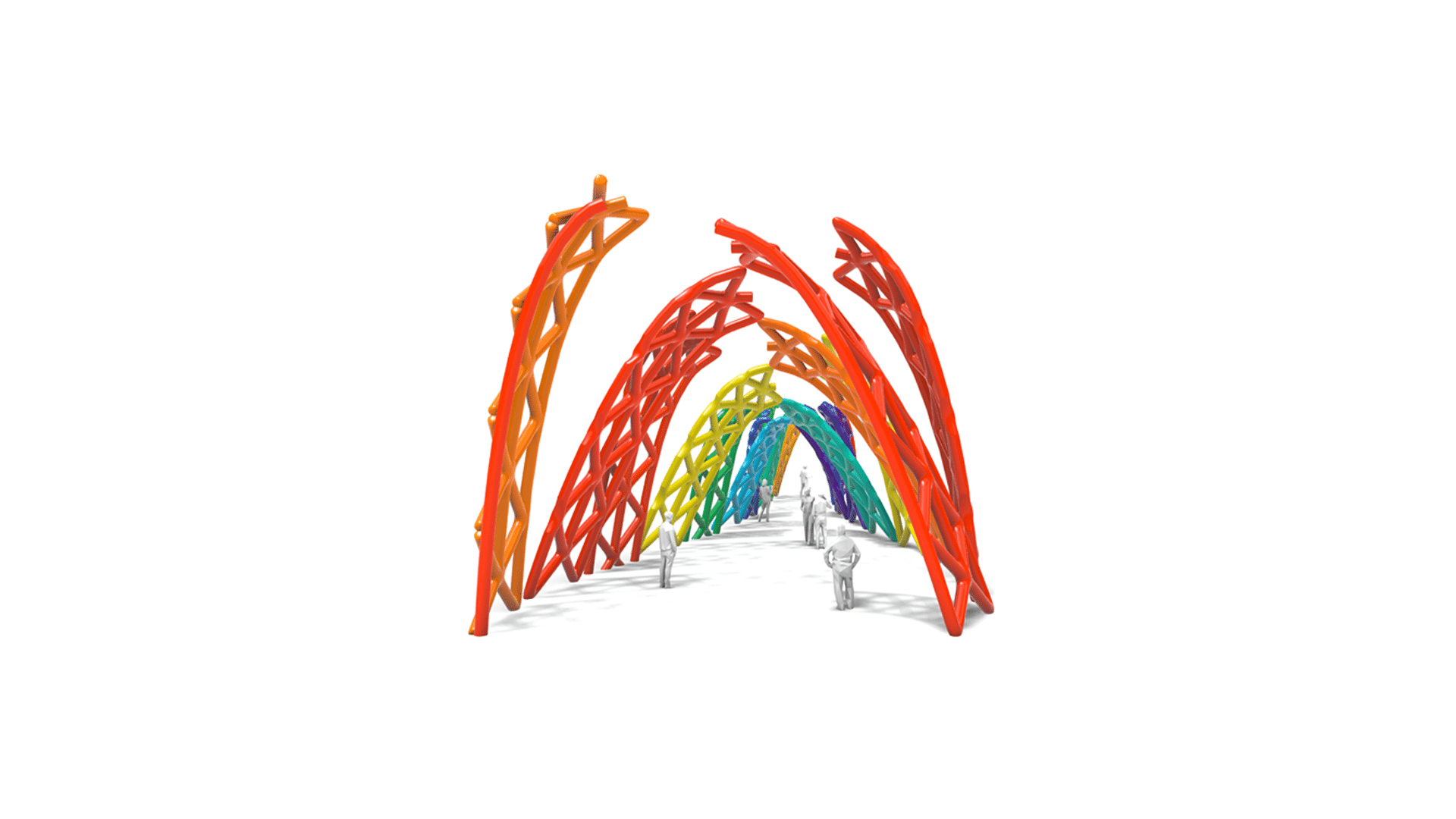
02 | Resonance
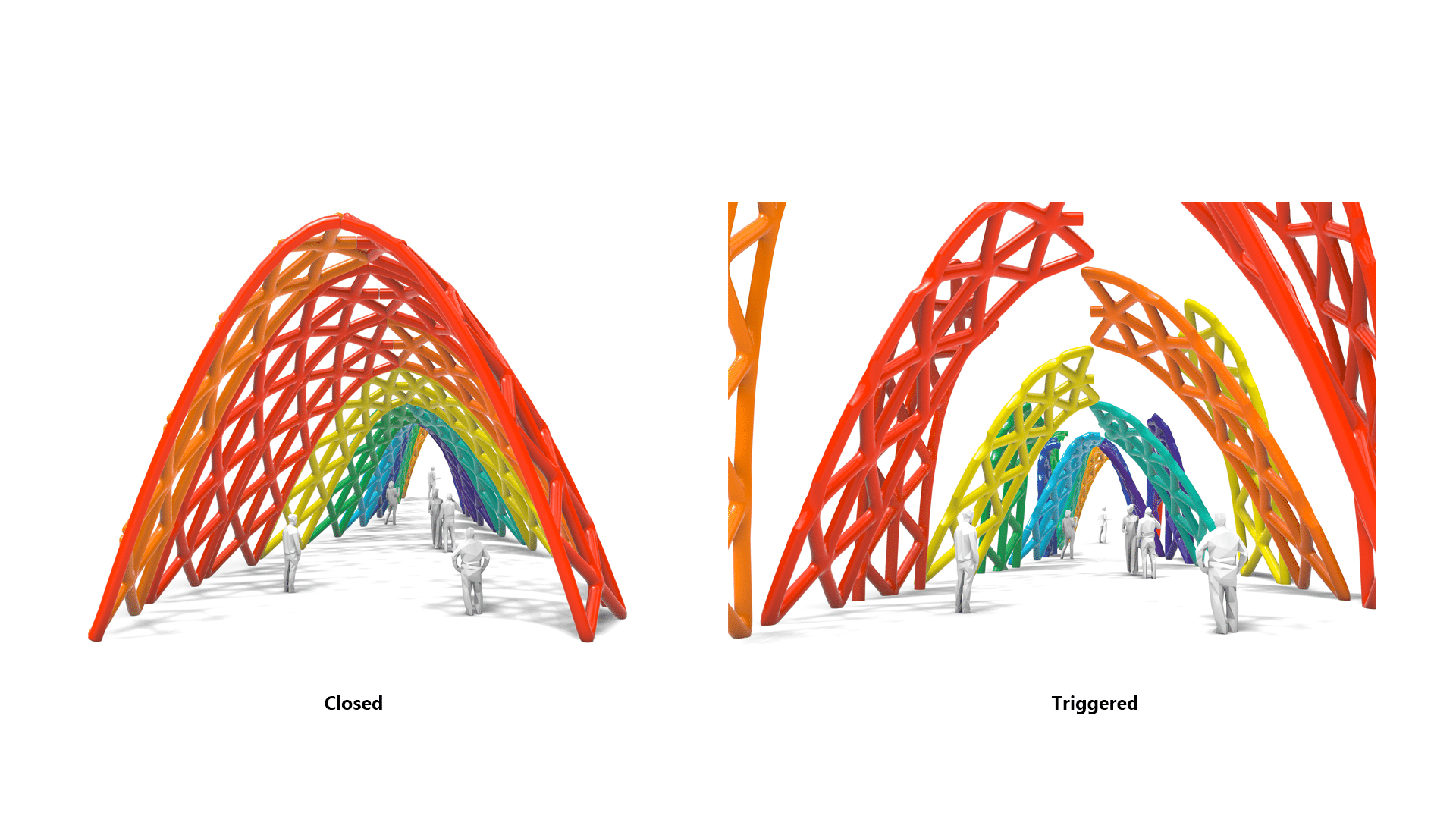
03 | Prototype
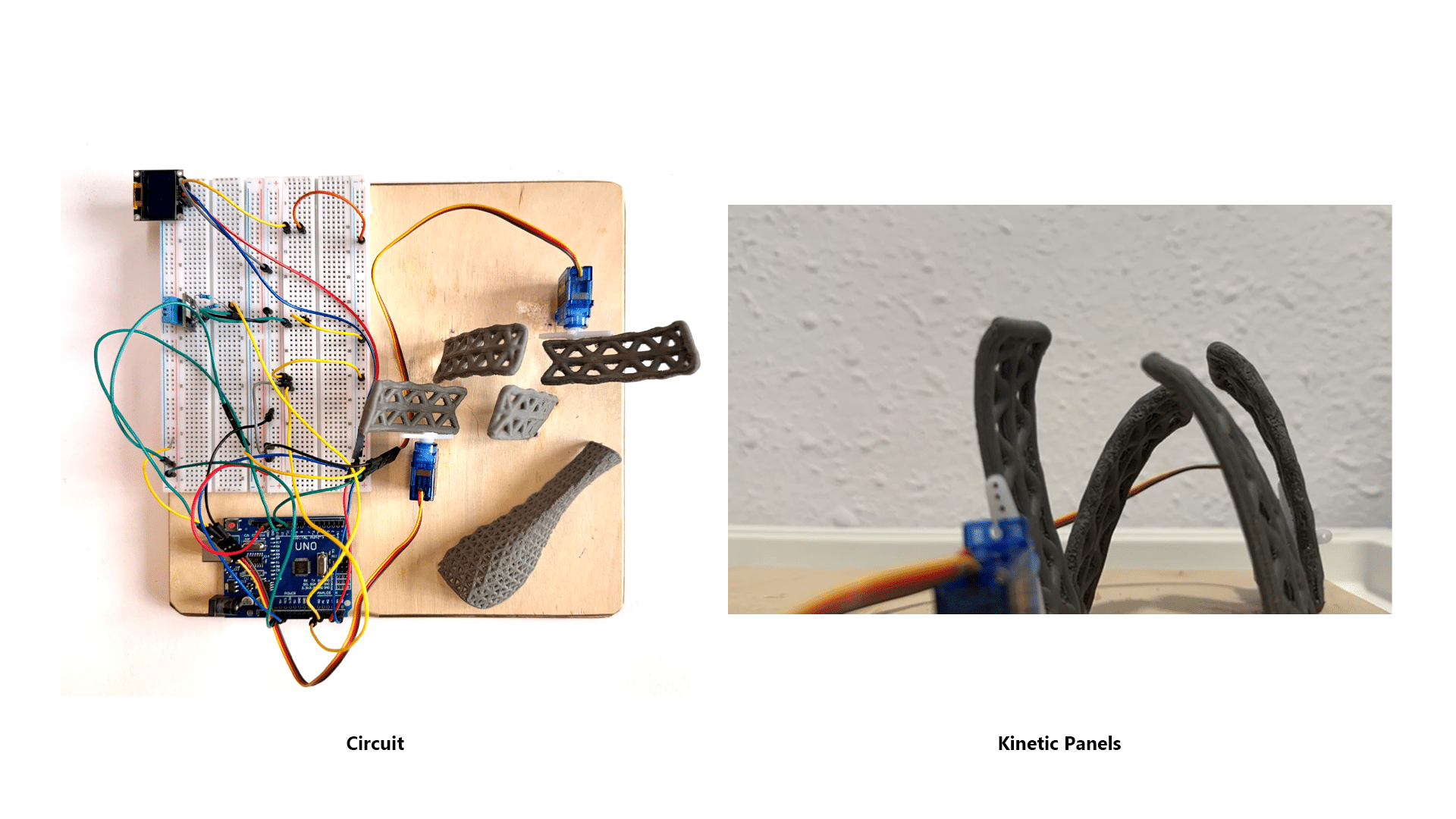
04 | Components
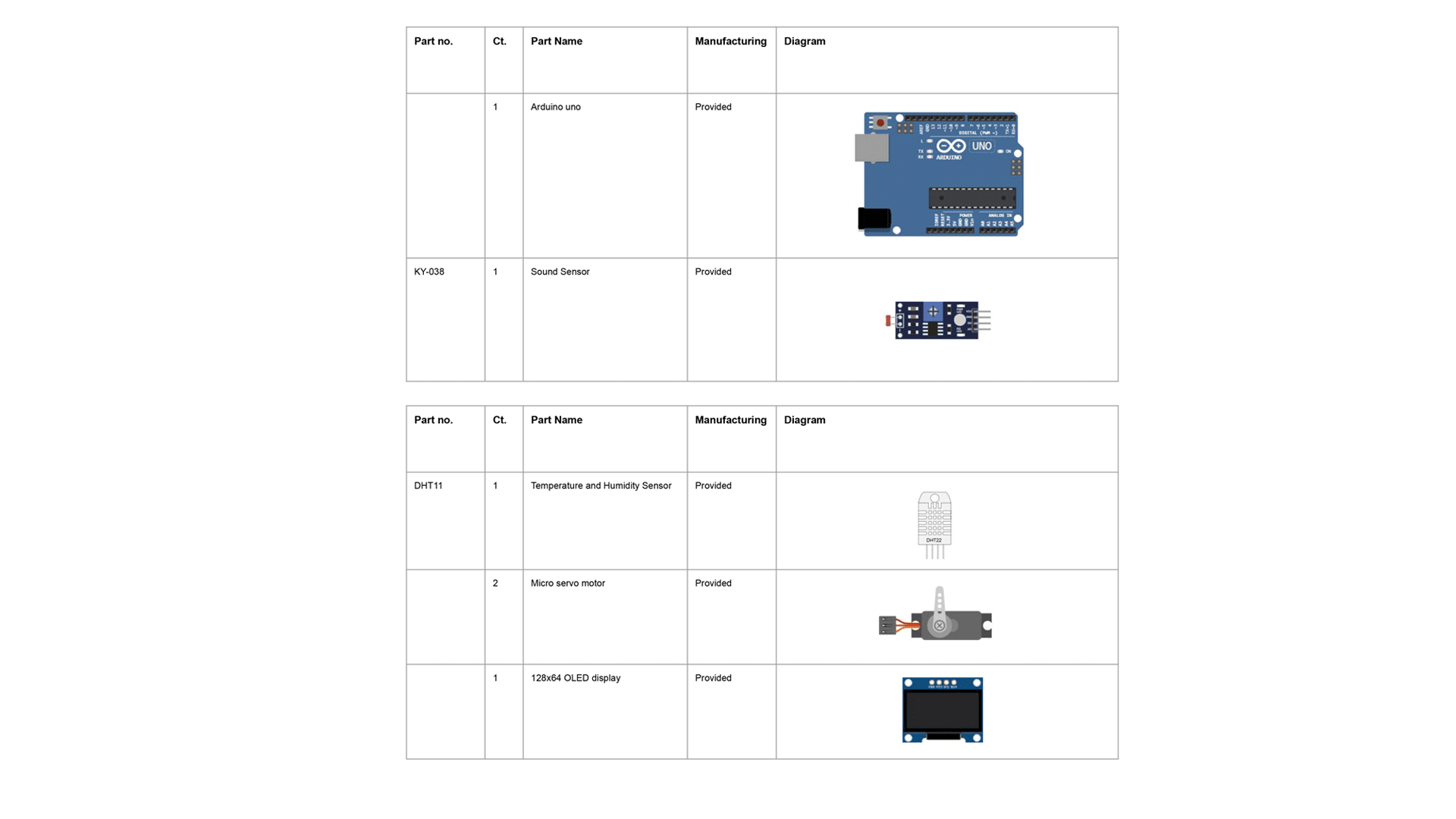
05 | Circuit diagram
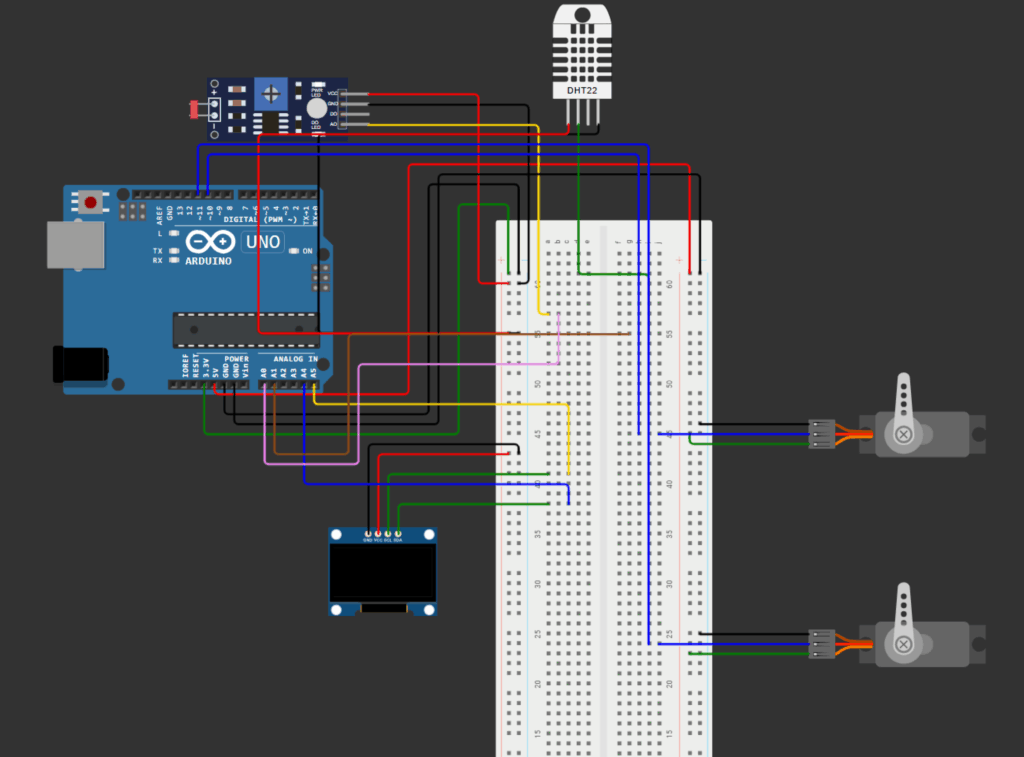
If the temperature inside the pavilion is high or the noise level outside is high, both panels will close automatically using the servo motors. Below is how this logic connects to your architecture layers and the circuit design:
06 | Output
The DHT22 sensor continuously monitors temperature inside the pavilion.
The sound sensor measures the noise level outside.
Processing Layer
The Arduino checks the sensor readings against user-defined thresholds (e.g., 28°C for temperature, 70 dB for noise).
When either measurement exceeds its threshold, the logic interprets this as an uncomfortable or disruptive environment.
Actuation Layer
If temperature rises above 28°C, the servo starts to move between 0 to 90 degree and triggers the panel to close; if noise exceeds 70 dB, the second servo triggers the other panels. The appropriate servo motor is triggered to close the pavilion’s panels.
07 | Data Visualization
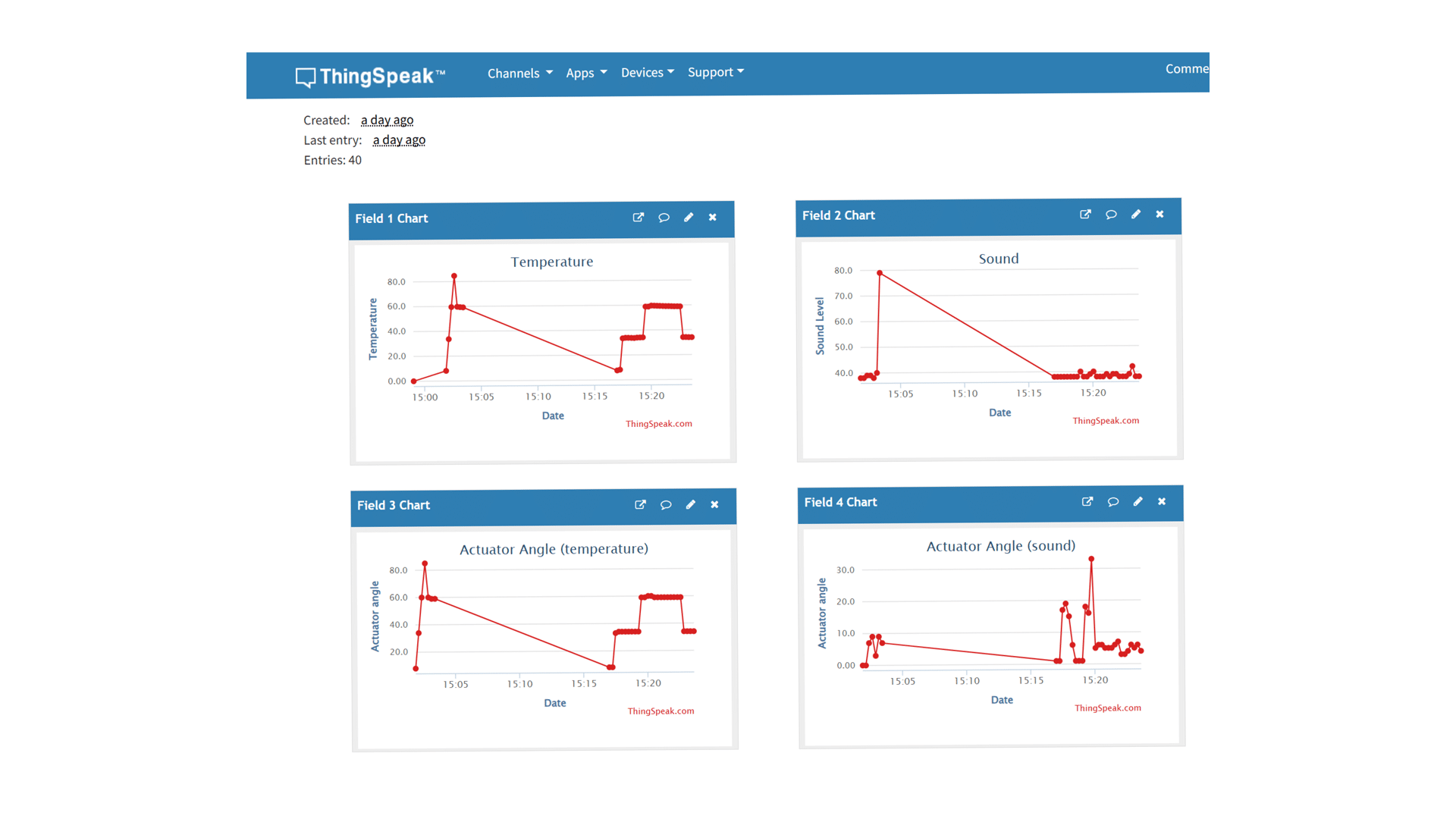
Real-time data visualizations from ThingSpeak for an environmental sensing and actuation system in a pavilion. The system monitors temperature and sound levels, and then triggers servo actuators to control pavilion panels.
08 | Limitations
This project is primarily limited by its narrow sensing scope, since it only responds to sound and temperature, leaving out other environmental discomforts such as poor air quality or changing light conditions. Additionally, the use of standard servo motors restricts its application to small-scale or lightweight panels, making it impractical for larger architectural installations without further engineering. Finally, the control logic for panel movement relies on fixed thresholds rather than adaptive algorithms, which means the pavilion may not always respond optimally to dynamic or unpredictable environmental changes.
09 | Future Optimization
This project could focus on expanding the range of sensed environmental parameters to include factors like air quality, light intensity, and occupancy, creating a richer, multimodal understanding of comfort in architectural spaces. Advancements might also incorporate adaptive machine learning algorithms that enable the pavilion to predict changes and personalize actuation based on historical data, rather than relying on fixed thresholds. Furthermore, integrating stronger actuators and more sustainable or biomimetic materials could make the system scalable to larger, real-world pavilions while enhancing its ability to support both environmental adaptation and energy efficiency.
10 | Reference
Tetra Script: A Responsive Pavilion, From Generative Design to Automation https://papers.cumincad.org/data/works/att/ijac201210106.pdf?utm_source=chatgpt.com
SOMBRA Pavilion: A Passive Kinetic Shading System Inspired by the Sun https://materialdistrict.com/article/sombra-pavilion-a-passive-kinetic-shading-system-inspired-by-the-sun/?utm_source=chatgpt.com

